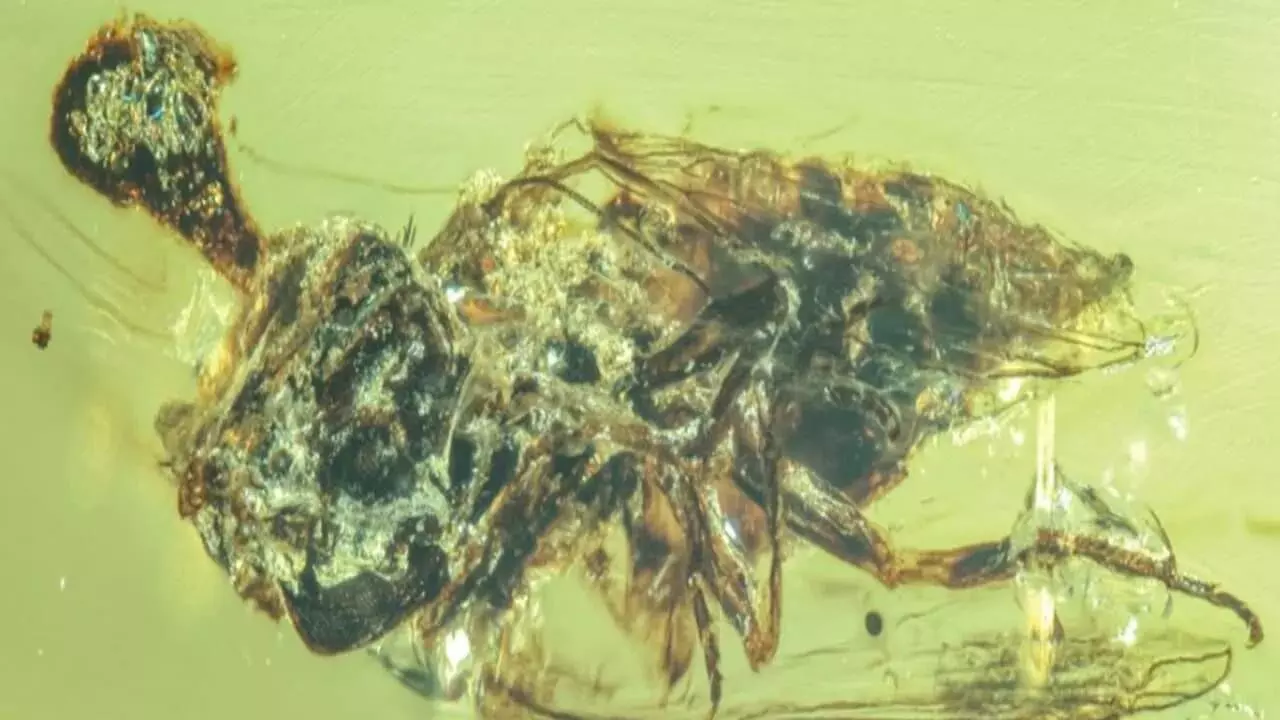Ancient ‘Zombie’ Fungi in Amber Reveal Earliest Insect-Parasite Relationships
Ancient 99-million-year-old amber fossils reveal earliest parasitic ‘zombie’ fungi-insect relationships, pushing Ophiocordyceps origin back by 30 million years.
image for illustrative purpose

Researchers from the Chinese Academy of Sciences have uncovered two new species of parasitic fungi preserved in 99-million-year-old amber, offering the oldest direct evidence of fungi-insect parasitic relationships. These fossilized fungi, named Paleoophiocordyceps gerontoformicae and Paleoophiocordyceps ironomyiae, were discovered in specimens housed at England’s Natural History Museum.
Paleoophiocordyceps gerontoformicae features delicate fungal stalks growing from an ant pupa, while Paleoophiocordyceps ironomyiae is identified by a phallus-like fruiting body emerging from a fly’s head. According to Wang Bo, a researcher involved in the study, these fossils provide critical insights into the co-evolution of fungi and insects, a topic previously limited by the fragile nature of fungal structures in the fossil record.
Paleoentomologist Edmund Jarzembowski highlighted that the fungi had already adapted to parasitize two different insect hosts—a true fly and an ant—around 100 million years ago, marking early host shifts that influenced the evolution of the Ophiocordyceps genus.
These ancient fungi share traits with modern Ophiocordyceps species, which are infamous for their ability to infect insects and manipulate their behavior, often called “zombie fungi.” They hijack the insect’s nervous system, compelling it to climb to elevated spots before killing it and releasing spores, a behavior that likely existed in ancient times.
Using advanced imaging techniques such as micro-CT scanning and genetic analysis of 120 modern Ophiocordyceps species, researchers estimated that the genus diverged approximately 130 million years ago—pushing back previous estimates by about 30 million years. The study suggests these fungi diversified alongside their insect hosts during the Cretaceous period, coinciding with the evolution and expansion of moths and ants, which allowed fungi to specialize by shifting hosts.
Amber’s exceptional preservation sheds light on ancient ecological interactions, making these specimens some of the earliest evidence of ‘zombie’ fungi. This discovery not only enriches our understanding of fungal evolution but also the complex parasitic dynamics between fungi and insects dating back millions of years.
Source: Proceedings of the Royal Society B: Biological Sciences (2025)

